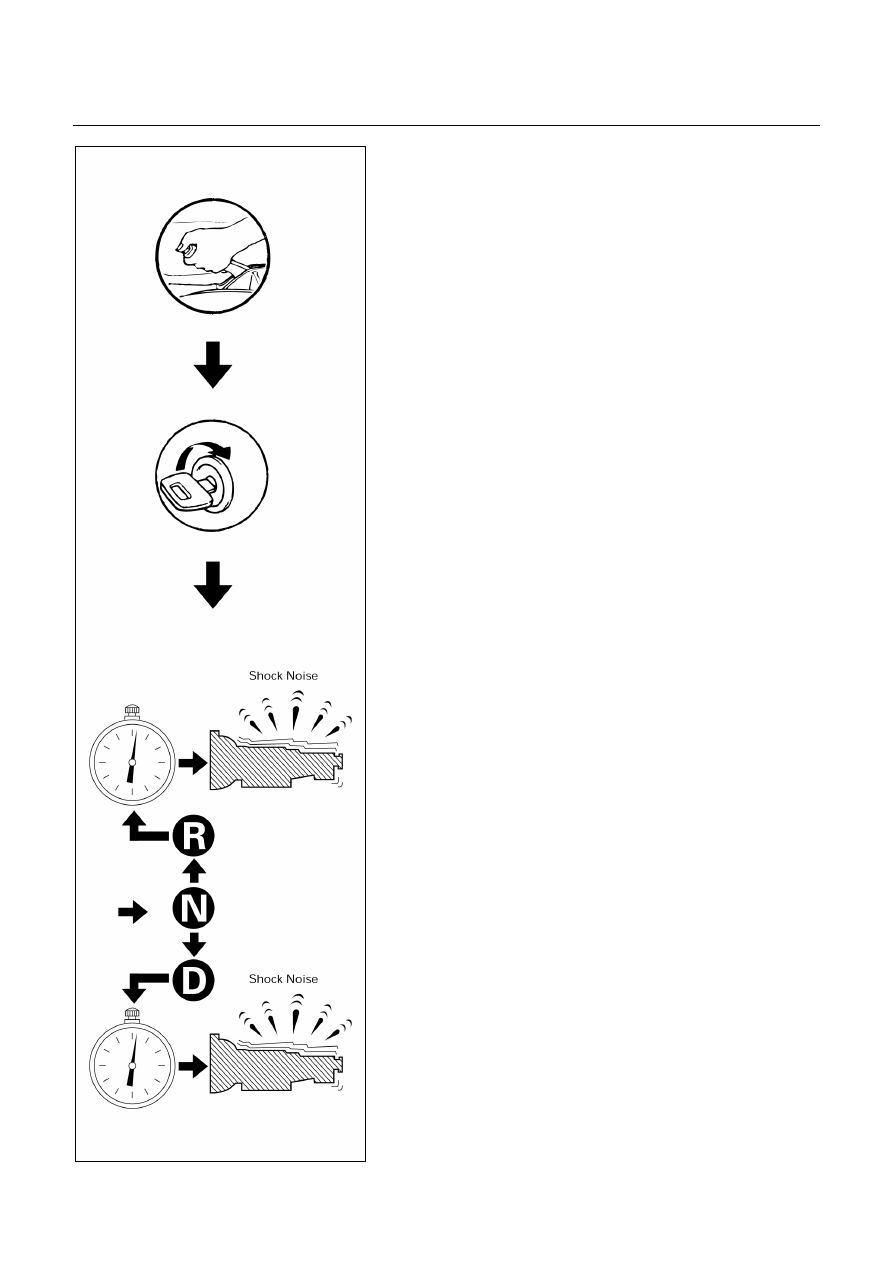Isuzu D-Max / Isuzu Rodeo (TFR/TFS). Manual - part 313

AUTOMATIC TRANSMISSION (AW30-40LE) 7A-101
F07RY00003
TIME LAG TEST
If the shift lever is shifted while the engine is idling, there
will be a certain time elapse or lag before the shock can be
felt. This is used for checking the condition of the forward
clutch, direct clutch, No.3 brake, and No.2 one-way clutch.
NOTE:
(1) Perform the test at normal operation fluid
temperature (50 – 80ººººC or 122 – 176ººººF)
(2) Be sure to allow one minute interval between
tests.
(3) Make three measurements and take the average
value.
MEASURE TIME LAG
1. Fully apply the parking brake.
2. Start the engine.
Check idling speed (A/C OFF).
3. Shift the shift lever from “N” to “D” range. Using a stop
watch, measure the time it takes from sihfting the lever
until the shock is felt.
Time lag: Less than 0.7 seconds
4. In same manner, measure the time lag for “N” → “R”.
Time lag: Less than 1.2 seconds
EVALUATION
1. If “N” → “D” time lag is longer than specified:
・Line pressure too low
・Forward clutch malfunction
・No.2 one-way clutch not operating properly
2. If “N” → “R” time lag is longer than specified:
・Line pressure too low
・Direct clutch malfunction
・No.3 brake malfunction
3. If both time lag is longer than specified:
・Line pressure too low